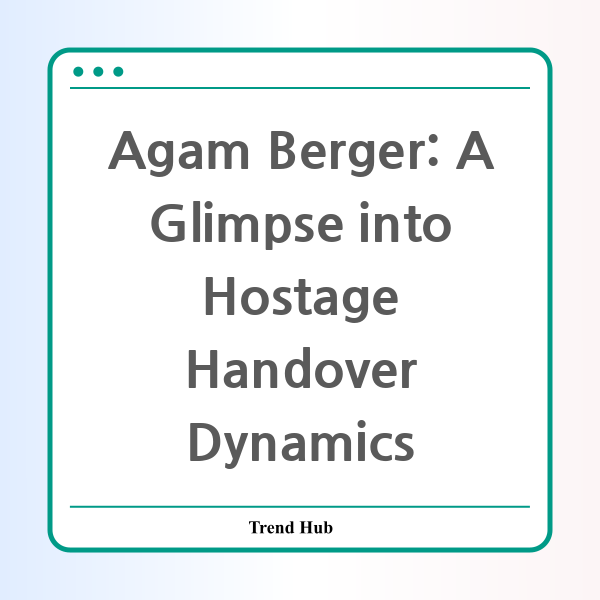* This website participates in the Amazon Affiliate Program and earns from qualifying purchases.

What does the release of Agam Berger mean for Israeli-Palestinian relations?
The recent release of Agam Berger, a female Israeli soldier, epitomizes the complex dynamics of hostage negotiations and the ongoing conflict between Israel and Hamas. This event, which coincided with a ceasefire agreement, not only brings emotional relief to the families involved but also raises questions about the broader implications for peace in the region.
On January 30, 2025, Agam Berger was handed over to the Red Cross by Palestinian militants in Jabalia, northern Gaza, as part of a significant hostage exchange deal. This latest chapter in the Israeli-Palestinian saga exemplifies the intricate dance of diplomacy, negotiation, and the human cost of conflict.
As Israel and Hamas engage in a tenuous ceasefire, the exchange of hostages serves as a glimmer of hope amidst turmoil. With Berger’s release, along with two other Israeli hostages, Gadi Moses and Arbel Yahud, the narrative of the ongoing conflict is nuanced by moments of compassion that challenge the broader narrative of hostility. These exchanges, although temporary, provide a platform for dialogue between two deeply divided worlds.
In recent months, the Hostages Square in Tel Aviv has transformed into a potent symbol of collective yearning among families and supporters hoping for the safe return of loved ones. This public gathering has become a focal point for mounting pressure on the Israeli government to secure the release of all hostages, creating a unique intersection of public sentiment, media attention, and political maneuvering.
The metrics of this hostage crisis are staggering: more than 250 individuals were taken during the October 7 attacks, with around 90 still unaccounted for. The harsh reality remains that, while some families find closure, others continue to live in uncertainty. The lingering impact of such trauma on communities is profound, often leading to enduring cycles of grief and animosity.
The terms of the recent agreement, which involve the release of 110 Palestinian prisoners, highlights the recurrent theme of conditional negotiations — where one party’s security needs often overshadow another’s humanitarian concerns. As the two sides navigate this complex landscape, it raises critical questions regarding the ethics of hostage negotiations. Should the release of prisoners be a part of the bargaining chips? What are the long-term consequences of such arrangements on both sides?
Through Agam Berger’s release, a glimpse of potential pathways to peace emerges amidst the backdrop of violence. Each transaction between negotiators can be seen as a step toward understanding and empathy, however precarious. The international community watches closely, aware that any misstep may derail months of tentative dialogue.
As families celebrate the return of their loved ones, it is essential to acknowledge the broader narrative at play and strive for a resolution that prioritizes the dignity and rights of all involved. The road to lasting peace might still be fraught with challenges, but every freed hostage reminds us of the humans behind the headlines, urging us to seek understanding amidst the chaos.
In conclusion, the return of Agam Berger is more than just a story of reunion; it is a symbol of hope for many, and a reminder of the work still to be done. As negotiations continue, the hope is for more moments of humanity to shine through the darkness of conflict.
* This website participates in the Amazon Affiliate Program and earns from qualifying purchases.